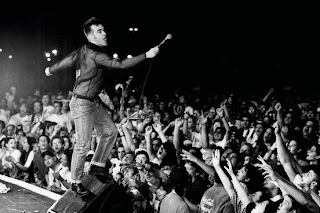MANCHESTER'S MUSIC SCENE
The Northern Quarter
On an organised excursion to Manchester's Northern Quarter, we were asked to capture the ambiance of its reference to music on a short photographic trek.
Some background:
Culturally, Manchester has played a major role in English history since the Industrial Revolution. Although, Manchester is the third largest city by population size, in the national psyche, it is regarded the most important after London because of its cultural influence.
It has many art galleries, museums and examples of notable architecture. Manchester also has one of the largest university campuses in Europe, which helps to swell its population and increase the intellectual capacity.
Musically, Manchester has two highly regarded orchestras: the Halle and the BBC Philamonic. On the popular front and post-war, it has had many nationally and internationally recognised singers and groups like The Bee Gees, Simply Red, the Stone Roses and singers like Elke Brooks, Morrissey and the recently deceased ex-Coronation Street extra, Davy Jones of the Hollywood manufactured band, The Monkeys.
In the early 1980s and '90s, "Madchester", a music scene was developed. It compromised a variety of musical styles like dance music, psychedelic Rock and alternative rock. Artists associated with this movement included The Smiths, OMD, Echo & The Bunnymen, New Order, Happy Mondays, The Stone Roses, Joy Division, Blur, James, The Charlatans, and a young Madonna and other less prominent groups.
The Hacienda nightclub was the centre of this scene and its musical style that was called the "Second Summer of Love". The Hacienda was created by Rob Gretton, New Order and the late TV personality and The Factory record label owner Tony Wilson. The American publication "Newsweek" called it the world's most famous nightclub. The Hacienda was the catalyst for this diverse movements of music.
Media interest grew in the Manchester music scene and "Madchester" became something of an event. The New Music Express (NME), said the British press had "gone bonkers over Manchester bands."
Although interest began to decline in the early 1990s, Madchester had a lasting legacy. The number of nightclubs in Manchester grew and the Gay Village and Northern quarter were developed and city centre living increased. Madchester success also helped increased applications to Manchester University. There was also an increase in the city's media and creative industries which are clearly evident upon a stroll though the Northern Quarter.
The following are a collection of photographs taken in the Northern Quarter.
Cameras:
Canon 400D with a 18-55mm lens f/3.5 - f/5.6
Canon S95 with a 28-105mm lens f/2.0 - f/4.9
The Northern Quarter
Music Poster, flyers and Stickers
Restaurants and Pubs Musical Acts Advertising
Record Shops
"Penny Lane"
Second-hand clothes, memorabilia and music shop
Musicians
Doorways with posters
Music Acts Stickers
Walls with posters
The Exhibition:
Kevin Cummins
We also attended an exhibition of Kevin Cummins photography primarily of Morrissey, the lead singer of the Manchester group "The Smiths".
The exhibition was held at the Manchester Photographic, Lever Street, Manchester.
It was quiet clear from the exhibition that Cummins had a close working relationship with Morrissey. Nearly ninety per-cent were photographs of the singer. The photographs were mostly black and white and a small collection of colour. The photographs of the singer were inter-dispersed with others of the group members and fans. It was clear to see that Morrissey is adored by his fans who idolise him: fans embracing him, others with tattoos of him, the band name and song lyrics.
A Mancunian, Cummins trained as a photographer in Manchester, attending as many concerts as he could and (in his own words), accumulating a personal library of musical acts. He studied documentary photography and believed it was important to archive all the acts he saw including the support act. It was this diligence that brought Morrissey to Cummins awareness. His work came to the attention of the NME who gave him a job and a salary that didn't even cover the cost his processing expenses.
Cummins shot over 200 covers for the NME and he developed a close relationship with many bands that helped to take more meaningful photographs with their cooperation.
He feels that photographers suffer nowadays as the environment surrounding singers and bands is managed by PR and money men who limit access to acts. Its a big change from the days Cummins started out.
The Photographs
We were not allowed to take pictures of the photographs so I've had to download a few from the internet that were on display:
Street Sounds:
I recorded this violinist at the Oxford Street Tube station when I was in London working on a clients job a few weeks back.
London's underground buskers are famous world-wide. The musicians play all forms of music: jazz, classical, pop, ethnic (eg Irish).
























































No comments:
Post a Comment